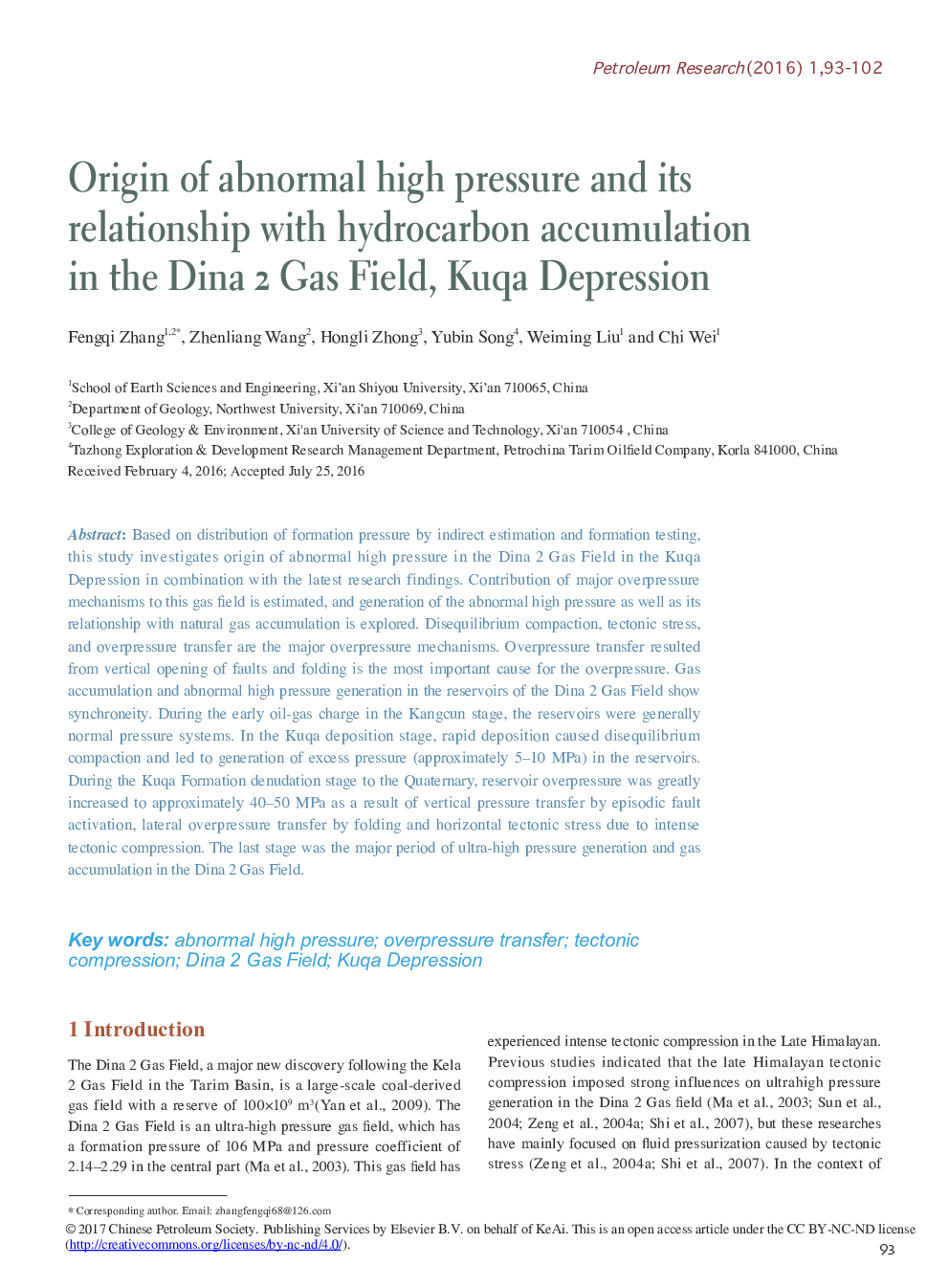| Article ID | Journal | Published Year | Pages | File Type |
|---|---|---|---|---|
| 10998247 | Petroleum Research | 2016 | 10 Pages |
Abstract
Based on distribution of formation pressure by indirect estimation and formation testing, this study investigates origin of abnormal high pressure in the Dina 2 Gas Field in the Kuqa Depression in combination with the latest research findings. Contribution of major overpressure mechanisms to this gas field is estimated, and generation of the abnormal high pressure as well as its relationship with natural gas accumulation is explored. Disequilibrium compaction, tectonic stress, and overpressure transfer are the major overpressure mechanisms. Overpressure transfer resulted from vertical opening of faults and folding is the most important cause for the overpressure. Gas accumulation and abnormal high pressure generation in the reservoirs of the Dina 2 Gas Field show synchroneity. During the early oil-gas charge in the Kangcun stage, the reservoirs were generally normal pressure systems. In the Kuqa deposition stage, rapid deposition caused disequilibrium compaction and led to generation of excess pressure (approximately 5-10Â MPa) in the reservoirs. During the Kuqa Formation denudation stage to the Quaternary, reservoir overpressure was greatly increased to approximately 40-50Â MPa as a result of vertical pressure transfer by episodic fault activation, lateral overpressure transfer by folding and horizontal tectonic stress due to intense tectonic compression. The last stage was the major period of ultra-high pressure generation and gas accumulation in the Dina 2 Gas Field.
Keywords
Related Topics
Physical Sciences and Engineering
Earth and Planetary Sciences
Geology
Authors
Fengqi Zhang, Zhenliang Wang, Hongli Zhong, Yubin Song, Weiming Liu, Chi Wei,
